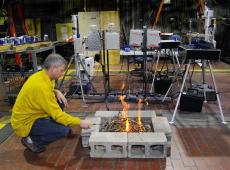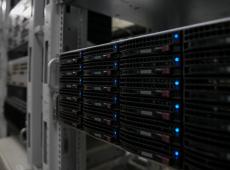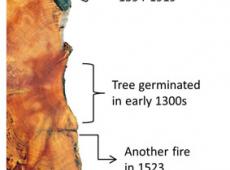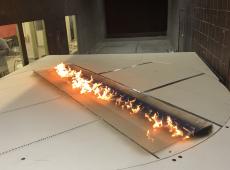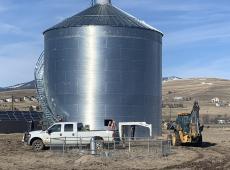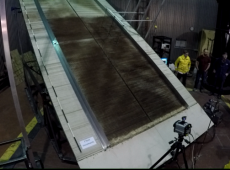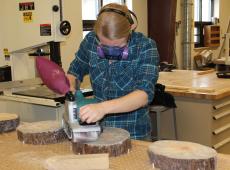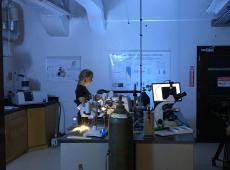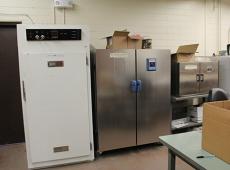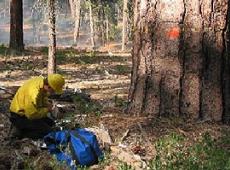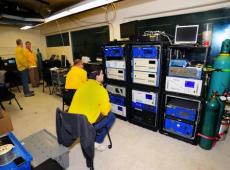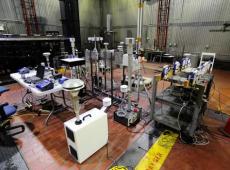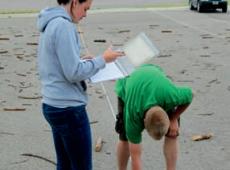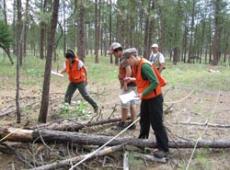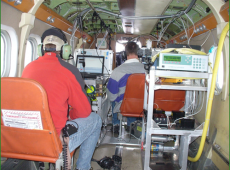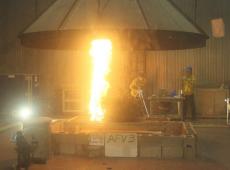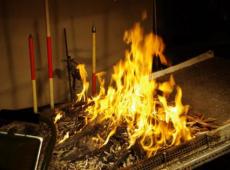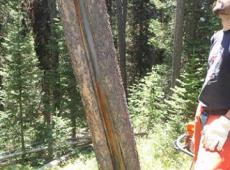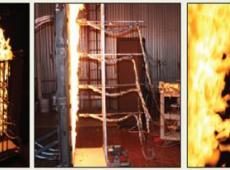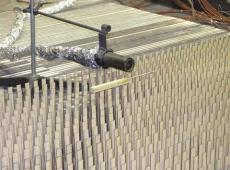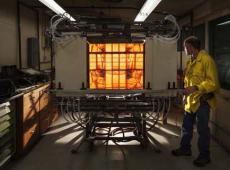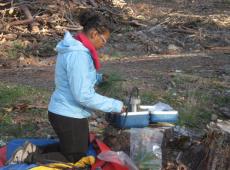Image Gallery
Our photographs represent research, presentations, award ceremonies, fire simulations, tours, and educational events. Click on an image to see a larger view and description. Browse related images by tags. Photos are provided by the USDA and Forest Service unless otherwise noted.
Collecting fuel samples to determine moisture content at the base of a Jeffrey pine tree immediately before the prescribed burn.
Airborne Laboratory. Gas and particle measurement instruments and flight scientists on the U.S. Forest Service Region 4 Twin Otter aircraft.
Convection heat transfer requires flames to contact adjacent fuels. Discontinuous fuels (e.g. shrub and tree canopies) require flames to extend across gaps between fuel clusters. The vertical flame wall with its high sample rate heat flux sensors (shown) and thermocouples are used to describe flame turbulence and thus the flame position and duration. Diffusion flames are produced using buoyantly neutral ethylene fuel gas.
An instrumented fuel bed composed of laser-cut cardboard. These uniform fuel beds are burned in the wind tunnel to determine rate of spread and other physical characteristics of fire.
demonstrates use of the glowing radiant panel. Surrounded by reflections from elliptical mirrors, the panel allows researchers to examine the effects of radiant heat on ignition rates.
(Credit: Photo courtesy of Richard Barnes / OTTO)
